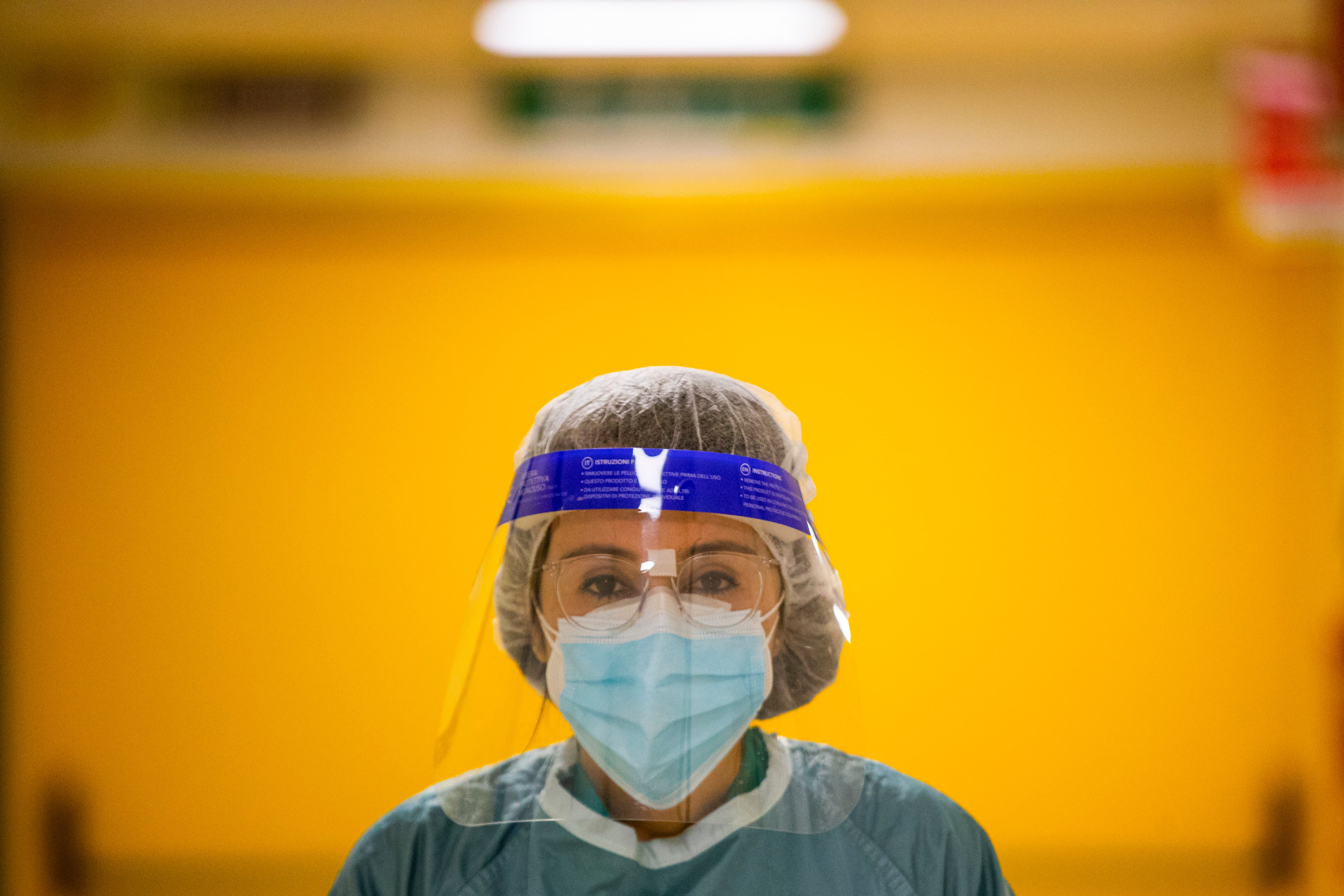AP PHOTOS: Virus ward doctor runs from dawn to dark in Italy
Dr. Elisabetta Teti recalls the nightmare weeks when the coronavirus first erupted in Italy

Your support helps us to tell the story
From reproductive rights to climate change to Big Tech, The Independent is on the ground when the story is developing. Whether it's investigating the financials of Elon Musk's pro-Trump PAC or producing our latest documentary, 'The A Word', which shines a light on the American women fighting for reproductive rights, we know how important it is to parse out the facts from the messaging.
At such a critical moment in US history, we need reporters on the ground. Your donation allows us to keep sending journalists to speak to both sides of the story.
The Independent is trusted by Americans across the entire political spectrum. And unlike many other quality news outlets, we choose not to lock Americans out of our reporting and analysis with paywalls. We believe quality journalism should be available to everyone, paid for by those who can afford it.
Your support makes all the difference.Dr. Elisabetta Teti recalls the nightmare weeks when the coronavirus first erupted in Italy and girds herself for what her life will be like through the coming winter if tens of thousands of Italians are still getting diagnosed with COVID-19 and hundreds are dying every day.
Teti, an infectious disease specialist at a hospital on the outskirts of Rome already begins and ends her workday in darkness. AP Photographer Alessandra Tarantino followed the 39-year-old doctor one recent Saturday, from her home, through a 12-hour shift caring for patients needing sub-intensive care, and home again, exhausted.
The numbers the pandemic is producing at Vergata Polyclinic Hospital are numbing. Teti ticks them off: 28 admitted patients in two COVID-19 units, 18 of them wearing the medical helmets they need to keep breathing; 70 patients in the emergency room, where many are aided by simple oxygen masks; and 10, the the number of minutes it takes Teti to “dress up” in protective gear before she can begin her rounds.
The process she completes in a special, sanitized room involves carefully putting on a protective gown, two pairs of gloves taped around the wrists, two face masks, a hair cap and a visor. It takes even longer for the doctor to “undress,” since she applies sanitizing gel to her gloved hands every time she strips off one of her protective layers.
Teti arrives at the hospital as staff members deal with a patient who died during the night. Nurses roll the body away on a gurney. Teti turns her attention to the living.
Communication is challenging when patients wear oxygen helmets and Teti is covered by layers of protective gear. But her energy and warmth carry across the physical barriers. A male patient in his 60s smiles back. Teti exudes confidence and optimism as she passes from bed to bed.
But when she returns to the meeting room where doctors review patient charts, she acknowledges that trying to keep people with this dangerous virus alive exacts an emotional toll.
At first, most of the medical staff found excuses when the hospital first offered them group psychological support sessions, Teti says. Now, they realize they need the help, and the doctors have started counseling sessions as a team, she says.
Fear of inadvertently transmitting the virus colors Teti's private life, too. During the first months of the pandemic, Teti and her husband, Stefano Capasso, wore masks at home. They refrained from even exchanging a kiss for months. She slept on the bed, Capasso on a couch.
On this Saturday, the doctor's husband was still asleep when she slipped out of their apartment after a quick coffee at dawn. But as another heavy day draws to a close, they sit together at their dining table and share the late evening meal he prepared for them.
__
Follow AP’s coverage at https://apnews.com/hub/coronavirus-pandemic and https://apnews.com/UnderstandingtheOutbreak